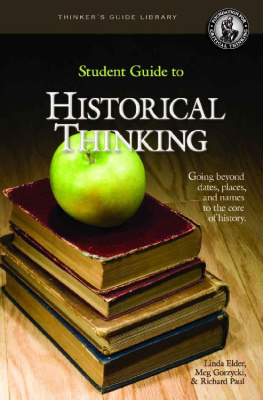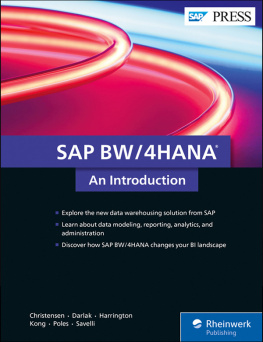Cover

| title | : | The Complete Guide to Elementary Student Assistance Programs : Strategy, Policy, and Procedure |
| author | : | Christensen, Linda.; DeVol, Philip E. |
| publisher | : | Hazelden Publishing |
| isbn10 | asin | : | 0894869418 |
| print isbn13 | : | 9780894869419 |
| ebook isbn13 | : | 9780585388175 |
| language | : | English |
| subject | Student assistance programs--United States, Counseling in elementary education--United States. |
| publication date | : | 1993 |
| lcc | : | LB3430.5.C57 1993eb |
| ddc | : | 372.17/1 |
| subject | : | Student assistance programs--United States, Counseling in elementary education--United States. |
Page i
The Complete Guide
To Elementary Student Assistance
Programs
Page ii
About the author
Linda Christensen, Ph.D., C.C.D.P., has served as an educational consultant, prevention specialist, counselor in private practice, trainer, high school principal, and English teacher. She is the author of Facts, Feelings, Family, and Friends: A Curriculum for Grades K-6 and You Can Make a Difference, as well as several other titles.
Philip E. DeVol, C.A.C., has served as a Student Assistance Program and Employee Assistance Program consultant, and as a trainer for Johnson Institute, Children Are People, and Health Communications in the areas of K-6 prevention curricula, support group facilitation, and Student Assistance Programs. He is currently the director of the Morrow County, Ohio, Council on Alcohol and Other Drugs.
Page iii
The Complete Guide
To Elementary Student Assistance
Programs
Strategy, Policy, and Procedure
Linda Christensen, Ph.D.
and
Philip E. DeVol, C.A.C.

Page iv
Hazelden Educational Materials
Center City, Minnesota 55012-0176
1993 by Linda Christensen and Philip E. DeVol
All rights reserved. Published 1993
Printed in the United States of America
No portion of this publication may be
reproduced in any manner without the
written permission of the publisher
Library of Congress Cataloging In Publication Data
Christensen, Linda.
The complete guide to elementary student assistance programs/by Linda Christensen and Philip DeVol.
p. cm.
Includes bibliographical references.
ISBN 0-89486-941-8
1. Student assistance programsUnited States. 2. Counseling in elementary educationUnited States. I. DeVol, Philip. II. Title.
LB3430.5.C57 1993 |
| 372.17'1dc20 | 93-10670 |
| CIP |
Editor's note
Hazelden Educational Materials offers a variety of information on chemical dependency and related areas. Our publications do not necessarily represent Hazelden's programs, nor do they officially speak for any Twelve Step organization.
The Twelve Steps are reprinted with permission of Alcoholics Anonymous World Services, Inc. Permission to reprint the Twelve Steps does not mean that AA has reviewed or approved the contents of this publication, nor that AA agrees with the views expressed herein. AA is a program of recovery from alcoholism only use of the Twelve Steps in connection with programs and activities that are patterned after AA, but that address other problems, does not imply otherwise.
Acquisitions Editor: Vince Hyman
Cover Designer: Theresa Jaeger
Manuscript Editor: Jeff Petersen
Typography: Deborah Wischow
Copywriter: Sandra Haus
Printing Manager: Joan Seim
Production Manager: Cynthia Madsen
Printer: Versa Press, Inc.
This book is typeset in Adobe Garamond
Page v
Contents
Introduction | |
Chapter 1: Chemical Dependency and
Its Effects on Children | |
Chapter 2: Defining an Elementary Student
Assistance Program | |
Chapter 3: Starting an Elementary Student
Assistance Program | |
Chapter 4: The Core Team | |
Chapter 5: Choosing a Prevention Curriculum
That Will Work in Your School | |
Chapter 6: Starting Support Groups:
What You Need to Know | |
Chapter 7: Involving Parents | |
A PPENDIXES |
Appendix A: Philosophies and Policies | |
ESAP philosophy | |
School policy on chemical use | |
Sample policy: continuum of care | |
Staff use of alcohol and other drugs | |
The Twelve Steps of Alcoholic Anonymous | |
Page vi
Appendix B: Resources and Readings | |
Books for teachers, other professionals, and parents | |
Books for Children Grades K-2 | |
Books for children grades 34 | |
Books for children grades 56 | |
Organizations | |
Appendix C: Sample Forms and Tools for Evaluation | |
Introductory letter for parent permission form | |
Parent permission form | |
Letter to parentspassive permission | |
Student self-referral | |
Classroom behavior checklist | |
Inventory of existing ESAP components | |
Core team report and follow-up | |
ESAP monthly service utilization report | |
Support group participant evaluation form | |
Support group evaluation: parents | |
Support group facilitator evaluation | |
Group participant progress chart | |
ESAP quantified program measures | |
Prevention curriculum selection checklist | |
ESAP contract to remain chemical-free | |
Bibliography | |
Page 1
I NTRODUCTION
Educators across the country feel swamped by the demands of children, parents, communities, and government bureaucracies. Reform movements abound, and we are constantly called on to respond to them. Sometimes academic education seems to take a backseat.
There is a reason for all the hubbub. Changes in our culture have resulted in an increase of children whose nonacademic problems make the challenge of providing even basic education seem insurmountable. The rise in divorce, chemical dependency, violence, neglect, and sexual abuse has impacted the classroom to the point where some teachers feel overwhelmed.
Next page










